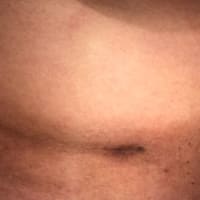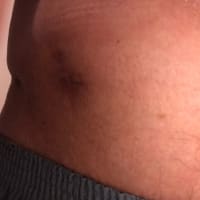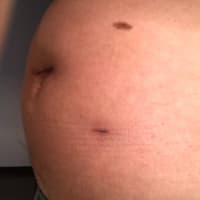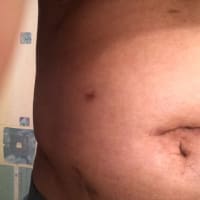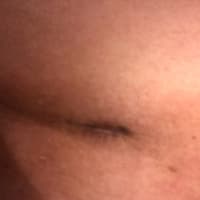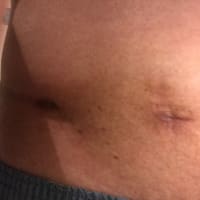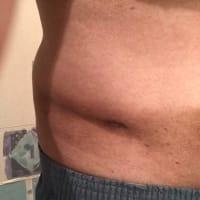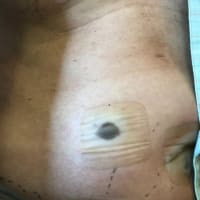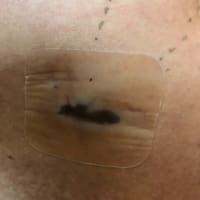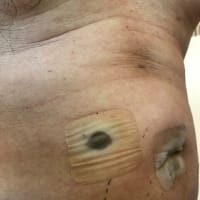当記事のオリジナル作製は2007年6月22日です。データを整理して再公開することを計画していたのですが、なかなか作業が進みませんため、とりあえずもう一度このオリジナルのまま再公開することといたしました。
長期成績に関しても、もう一度データを整理していきたいと考えております。
2018年6月25日
august03
////////////////////////////////////////////////////////////////////////////
(H19年7月4日追記 : この項は、august03が和訳したものです。
私は医師ではありませんので、医学的に誤解や誤りが含まれている可能性は
ありますので、どうかそのことを考慮されてお読みいただきたいと思います。
また、なんとかして文献本体を入手して、さらに詳細な内容をいつか皆様に
ご提供したいと考えております)
...........................................................
この研究も20年以上にわたり治療終了後の患者さんの健康状態を調査したものです
比較対照として側弯症ではない人をコントロールにして比べていますが、
若干の筋肉的能力の低下はあるようですが、日常生活活動における差はないこと
が示されています。治療終了時に残存するコブ角の影響もみられません。
腰痛が続く人もいることも示されていますので、治療終了後こそ身体を鍛える
ことが必要だと思います。
精神面での健康状態が劣る患者さんが4%ほどにみられます。これは、容姿に対する
コンプレックスが影響していると思われます。同様の調査が東京大学でも行われて
おり、その研究によりますと、日本人は欧米人よりもメンタル面での低下が大きい
ことが示されています。元来が恥ずかしがりの気質のある日本人では、欧米人以上
に患者さんのメンタル面でのケアに注意を払うことが大切だと思います。
側弯症は、そのような面でも経験のゆたかな専門医師のもとで治療されることが
お子さんにとってこころに傷を残さない方法だと思われます。
専門誌 : Eur Spine J. 2001 Aug;10(4):278-88.
タイトル :Health-related quality of life in patients with adolescent
idiopathic scoliosis: a matched follow-up at least 20 years after
treatment with brace or surgery.
思春期特発性側弯症患者における健康関連QOL
(手術または装具療法終了後20年を経過して)
医療機関 :Department of Orthopaedics, Sahlgrenska University Hospital,
Gothenburg University, Sweden.
思春期特発性側弯症患者の健康QOLに関しての長期フォローアップ研究は発表されて
いなかった。1968年から1977年にかけて、21才まえの患者で手術をうけた156人
(女子145人、男子11人)と装具療法を受けた127人(女子122人、男子5人)を20年以上
にわたり経過観察した。
手術患者の94%と装具患者の91%から、SF-36, PGWB, Oswestry(オズウェストリー腰
痛評価票)、SRS調査票等に回答してもらい、この患者群にマッチする性別と年齢の
対照者を100人選択し、同様の調査とレントゲン検査を行った。
結果は、この3群間には社会生活関連では「差」はなかった。
対照者に比較すると、手術患者と装具患者の両方とも、ほんのわずかな程度では
あるが筋肉機能が低下していることが、SF-36とOswestry調査票にあらわれた。
精神面(メンタル)においては、これら3群には「差」はなかった。
手術患者の49%、装具患者の34%、対照者の15%で、腰痛のために社会活動面に制限
を感じていた。これは身体を使う活動への参加に困難を感じていることと、容姿に
対する自信がないことのためであった。痛みは活動を制限する理由としては小さ
かった。
治療終了後のコブ角、カーブタイプ、かかった治療期間、治療終了時の年齢等と
これらQOL調査結果の点数とは相関関係はなかった。
思春期特発性側弯症を治療した患者は、人口統計上の全体像と比較しても、
その健康QOLには明確な「差」は見られなかった。患者の少数(4%)で精神面での健康
に著しい減少が見られた。また、ほんのわずかな患者(1.5%)では、腰痛のために著
しい身体的制限が見られた。
ブログ内の関連項目
20年後の健康状態が見える No.2
http://blog.goo.ne.jp/august03/e/a60e1144b03536ab11c07010ad5b605d
成長期終了後に側弯は進行するか
http://blog.goo.ne.jp/august03/e/14e88907988a1cca6cbc1081e7bcfd80
体験から得た
http://blog.goo.ne.jp/august03/e/961f72680050423477acbb34c2f8aa69
................................................
オリジナル英文
No results on long-term outcome in terms of health-related quality of life
(HRQL) have previously been presented for patients treated for adolescent
idiopathic scoliosis. A consecutive series of patients with adolescent
idiopathic scoliosis, treated between 1968 and 1977 before the age of 21,
either with distraction and fusion using Harrington rods [surgical
treatment group (ST), n=156; 145 females and 11 males] or with a brace
[brace treatment group (BT), n=127; 122 females and 5 males] were followed
at least 20 years after completion of the treatment.
Ninety-four percent of ST and 91% of BT patients filled in a questionnaire
comprising the SF-36, Psychological General Well-Being Index (PGWB),
Oswestry Disability Back Pain Questionnaire, parts of SRS/MODEM'S
questionnaire and study-specific questions concerning the treatment, as a
part of an unbiased personal follow-up examination including radiography
and clinical examination.
An age- and sex-matched control group of 100 persons was randomly selected
and subjected to the same examinations. The results showed no differences
in terms of sociodemographic data between the groups.
Both ST and BT patients had a slightly, but significantly, reduced physical
function using the SF-36 subscales, SF-36/Physical Component Summary (PCS)
score as well as the Oswestry Disability Back Pain Questionnaire compared
the controls.
Neither the mental subscales and the Mental Component Summary (MCS) score
of SF-36 nor the PGWB index showed any significant difference between the
groups. Forty-nine percent of ST, 34% of BT and 15% of controls admitted
limitation of social activities due to their back [P<0.001 ST vs controls,
P=0.0010 BT vs controls, and n.s. (P=0.024) ST vs BT], mostly due to
difficulties with physical participation in activities or
self-consciousness about appearance. Pain was a minor reason for
limitation. No correlation was found between the outcome scores and curve
size after treatment, curve type, total treatment time or age at completed
treatment. Patients treated for adolescent idiopathic scoliosis were found
to have approximately the same HRQL as the general population. A minority
of the patients (4%) had a severely decreased psychological well-being,
and a few (1.5%) were severely physically disabled due to the back.
長期成績に関しても、もう一度データを整理していきたいと考えております。
2018年6月25日
august03
////////////////////////////////////////////////////////////////////////////
(H19年7月4日追記 : この項は、august03が和訳したものです。
私は医師ではありませんので、医学的に誤解や誤りが含まれている可能性は
ありますので、どうかそのことを考慮されてお読みいただきたいと思います。
また、なんとかして文献本体を入手して、さらに詳細な内容をいつか皆様に
ご提供したいと考えております)
...........................................................
この研究も20年以上にわたり治療終了後の患者さんの健康状態を調査したものです
比較対照として側弯症ではない人をコントロールにして比べていますが、
若干の筋肉的能力の低下はあるようですが、日常生活活動における差はないこと
が示されています。治療終了時に残存するコブ角の影響もみられません。
腰痛が続く人もいることも示されていますので、治療終了後こそ身体を鍛える
ことが必要だと思います。
精神面での健康状態が劣る患者さんが4%ほどにみられます。これは、容姿に対する
コンプレックスが影響していると思われます。同様の調査が東京大学でも行われて
おり、その研究によりますと、日本人は欧米人よりもメンタル面での低下が大きい
ことが示されています。元来が恥ずかしがりの気質のある日本人では、欧米人以上
に患者さんのメンタル面でのケアに注意を払うことが大切だと思います。
側弯症は、そのような面でも経験のゆたかな専門医師のもとで治療されることが
お子さんにとってこころに傷を残さない方法だと思われます。
専門誌 : Eur Spine J. 2001 Aug;10(4):278-88.
タイトル :Health-related quality of life in patients with adolescent
idiopathic scoliosis: a matched follow-up at least 20 years after
treatment with brace or surgery.
思春期特発性側弯症患者における健康関連QOL
(手術または装具療法終了後20年を経過して)
医療機関 :Department of Orthopaedics, Sahlgrenska University Hospital,
Gothenburg University, Sweden.
思春期特発性側弯症患者の健康QOLに関しての長期フォローアップ研究は発表されて
いなかった。1968年から1977年にかけて、21才まえの患者で手術をうけた156人
(女子145人、男子11人)と装具療法を受けた127人(女子122人、男子5人)を20年以上
にわたり経過観察した。
手術患者の94%と装具患者の91%から、SF-36, PGWB, Oswestry(オズウェストリー腰
痛評価票)、SRS調査票等に回答してもらい、この患者群にマッチする性別と年齢の
対照者を100人選択し、同様の調査とレントゲン検査を行った。
結果は、この3群間には社会生活関連では「差」はなかった。
対照者に比較すると、手術患者と装具患者の両方とも、ほんのわずかな程度では
あるが筋肉機能が低下していることが、SF-36とOswestry調査票にあらわれた。
精神面(メンタル)においては、これら3群には「差」はなかった。
手術患者の49%、装具患者の34%、対照者の15%で、腰痛のために社会活動面に制限
を感じていた。これは身体を使う活動への参加に困難を感じていることと、容姿に
対する自信がないことのためであった。痛みは活動を制限する理由としては小さ
かった。
治療終了後のコブ角、カーブタイプ、かかった治療期間、治療終了時の年齢等と
これらQOL調査結果の点数とは相関関係はなかった。
思春期特発性側弯症を治療した患者は、人口統計上の全体像と比較しても、
その健康QOLには明確な「差」は見られなかった。患者の少数(4%)で精神面での健康
に著しい減少が見られた。また、ほんのわずかな患者(1.5%)では、腰痛のために著
しい身体的制限が見られた。
ブログ内の関連項目
20年後の健康状態が見える No.2
http://blog.goo.ne.jp/august03/e/a60e1144b03536ab11c07010ad5b605d
成長期終了後に側弯は進行するか
http://blog.goo.ne.jp/august03/e/14e88907988a1cca6cbc1081e7bcfd80
体験から得た
http://blog.goo.ne.jp/august03/e/961f72680050423477acbb34c2f8aa69
................................................
オリジナル英文
No results on long-term outcome in terms of health-related quality of life
(HRQL) have previously been presented for patients treated for adolescent
idiopathic scoliosis. A consecutive series of patients with adolescent
idiopathic scoliosis, treated between 1968 and 1977 before the age of 21,
either with distraction and fusion using Harrington rods [surgical
treatment group (ST), n=156; 145 females and 11 males] or with a brace
[brace treatment group (BT), n=127; 122 females and 5 males] were followed
at least 20 years after completion of the treatment.
Ninety-four percent of ST and 91% of BT patients filled in a questionnaire
comprising the SF-36, Psychological General Well-Being Index (PGWB),
Oswestry Disability Back Pain Questionnaire, parts of SRS/MODEM'S
questionnaire and study-specific questions concerning the treatment, as a
part of an unbiased personal follow-up examination including radiography
and clinical examination.
An age- and sex-matched control group of 100 persons was randomly selected
and subjected to the same examinations. The results showed no differences
in terms of sociodemographic data between the groups.
Both ST and BT patients had a slightly, but significantly, reduced physical
function using the SF-36 subscales, SF-36/Physical Component Summary (PCS)
score as well as the Oswestry Disability Back Pain Questionnaire compared
the controls.
Neither the mental subscales and the Mental Component Summary (MCS) score
of SF-36 nor the PGWB index showed any significant difference between the
groups. Forty-nine percent of ST, 34% of BT and 15% of controls admitted
limitation of social activities due to their back [P<0.001 ST vs controls,
P=0.0010 BT vs controls, and n.s. (P=0.024) ST vs BT], mostly due to
difficulties with physical participation in activities or
self-consciousness about appearance. Pain was a minor reason for
limitation. No correlation was found between the outcome scores and curve
size after treatment, curve type, total treatment time or age at completed
treatment. Patients treated for adolescent idiopathic scoliosis were found
to have approximately the same HRQL as the general population. A minority
of the patients (4%) had a severely decreased psychological well-being,
and a few (1.5%) were severely physically disabled due to the back.












